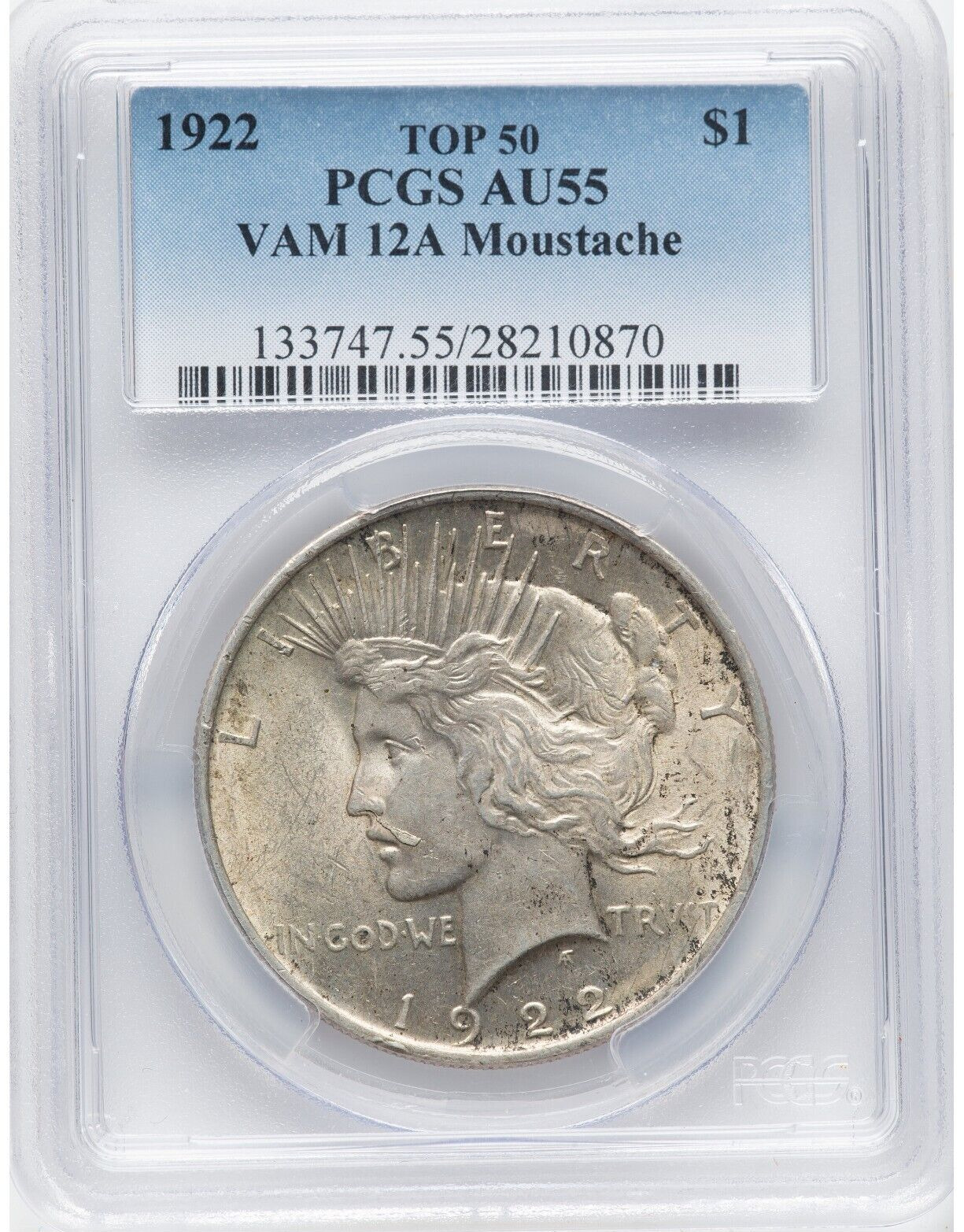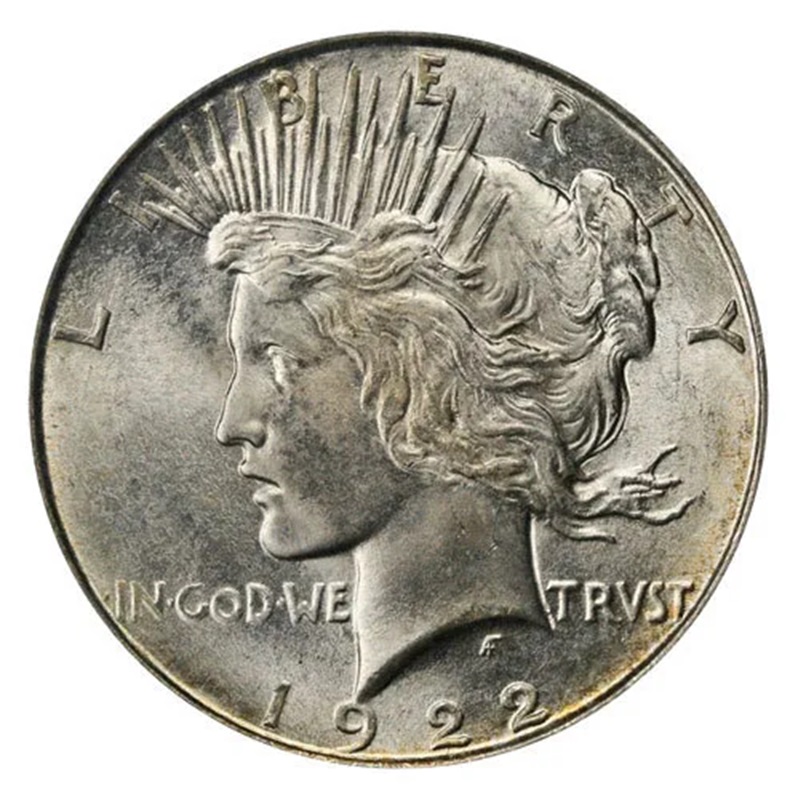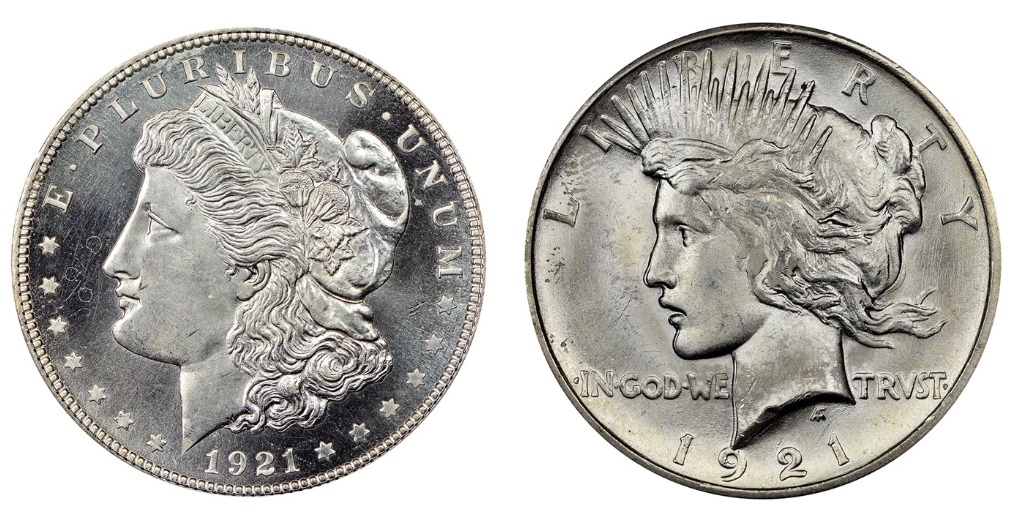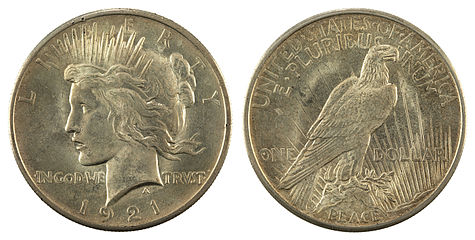The 1922 Peace Silver Dollar is a cornerstone of U.S. numismatic history and remains a compelling option for both bullion investors and coin collectors. Struck in the post–World War I era as a symbol of peace, the 1922 issue features one of the highest mintages of the series, yet offers a diverse range of varieties, error coins, and condition tiers that make it accessible—and occasionally quite valuable.
Whether you’re focused on silver content value, grading condition, or rare die‑varieties, this guide will walk you through the key specifications, design attributes, mint marks, condition ratings, error coins, and investment insights for the 1922 Peace Silver Dollar.
Specifications – 1922 Peace Dollar
| Attribute | Details |
|---|---|
| Denomination | $1 U.S. Dollar |
| Issue Year | 1922 (also struck at Philadelphia, Denver & San Francisco) |
| Composition | 90% Silver / 10% Copper |
| Actual Silver Weight (ASW) | 0.7734 troy ounces |
| Gross Weight | 26.73 grams |
| Diameter | 38.1 mm (1.50 inches) |
| Thickness | ~2.8 mm |
| Edge | Reeded (192 reeds) |
| Designer – Obverse | Antonio de Francisci |
| Designer – Reverse | Antonio de Francisci |
| Face Value | $1 (Legal Tender) |
These specifications are important for authentication and melt‑value calculations, particularly given the coin’s dual nature as both silver bullion and collectible piece.
Historical Context & Significance
After the Great War, the United States sought a new coin design that would convey the theme of peace. The Peace Dollar was introduced in 1921. By 1922, three U.S. Mint facilities—the Philadelphia (no mint mark), Denver (“D”), and San Francisco (“S”)—were producing the coin, and the year witnessed the highest output for the series. The low‑relief design introduced in 1922 allowed for more efficient mass production.
Because of this massive mintage, the 1922 Peace Dollar is often considered one of the most accessible silver dollars in the series. Yet, despite its volume, the variety of mint marks, error coins, and VAM (die‑variety) catalogues ensure that meaningful collecting opportunities remain for every budget.
Mint Marks, Mintage & Varieties
- Philadelphia (no mint mark): Largest mintage; most common.
- Denver (“D”): Intermediate rarity.
- San Francisco (“S”): Slightly rarer than Philadelphia.
According to numismatic sources, the mintage for 1922 across the three mints was in excess of 84 million coins. Because of the large volume, most 1922 Peace Dollars are readily available—but condition and variety drive value.
Value Ranges by Condition & Market Factors
The value of a 1922 Peace Silver Dollar is influenced by several factors:
- Silver spot price (since it contains 0.7734 oz of silver)
- Grade/condition (e.g., Good, Fine, Mint State)
- Mint mark (Philadelphia vs. Denver vs. San Francisco)
- Variety or error (VAMs, die breaks, clipped planchets, etc.)
Typical value ranges (as of current market conditions) for the common 1922 Peace Dollar follow approximate tiers:
| Condition | Estimated Value Range* |
|---|---|
| Good (G) to Fine (F) | ~$45–$50 |
| Very Fine (VF) | ~$50–$60 |
| Extremely Fine (XF) / About Uncirculated (AU) | ~$60–$80 |
| Brilliant Uncirculated (MS60–MS63) | ~$80–$150 |
| Certified MS65 | ~$200–$400 and up for strong strikes |
* Values approximate and fluctuate with spot silver price, market sentiment, and numismatic demand.
Noteworthy Error Coins & Die‑Varieties
Even though 1922 is a high‑mintage year, it features numerous error coins and die‑varieties (VAMs) which present excellent collector value:
- Clipped Planchet – Typical value: ~$150–$250 or more depending on severity.
- Die Cracks / Die Breaks – Often priced at ~$80–$150 for common grades.
- Curved Clip – Crescent‑shaped missing portion along edge; values ~$150–$300.
- Lamination Errors – Flaking or peeling metal layers; value depends on severity.
- VAM Varieties (e.g., “Moustache” VAM‑12A) – These can command multiples of standard values in higher grades, especially certified examples.

When evaluating error coins, graders and investors must ensure authenticity, proper grading, and strong strike preservation. Minor variations can escalate value significantly.

Investment and Collecting Strategy
For bullion investors, the 1922 Peace Silver Dollar offers a dual‑purpose asset: it carries intrinsic silver value (0.7734 oz) while also offering numismatic upside. It can serve as a core silver dollar holding with the potential for grade‑based or variety‑based appreciation.

For collectors, focusing on:
- High‑grade MS65+ examples
- Rare mint marks or strong‑strike specimens
- Recognised VAM error varieties
…can yield meaningful returns over time.
Because of its wide availability, the 1922 Peace Dollar is also a sensible entry coin for beginners—allowing diversification without excessive cost while educating on condition, mint marks, and varieties.
Final Thoughts
The 1922 Peace Silver Dollar remains an essential piece for both investors and collectors. With its solid silver content, enduring design, and thousands of identifiable die‑varieties, it offers both accessibility and depth. Whether you’re stacking silver for value or building a nuanced collection, understanding its specifications, market drivers, and value tiers will help you make informed decisions.
This article is for educational purposes only and does not constitute financial or investment advice. Always consult a qualified numismatist or professional precious‑metals advisor before making significant purchases.

.jpg)






